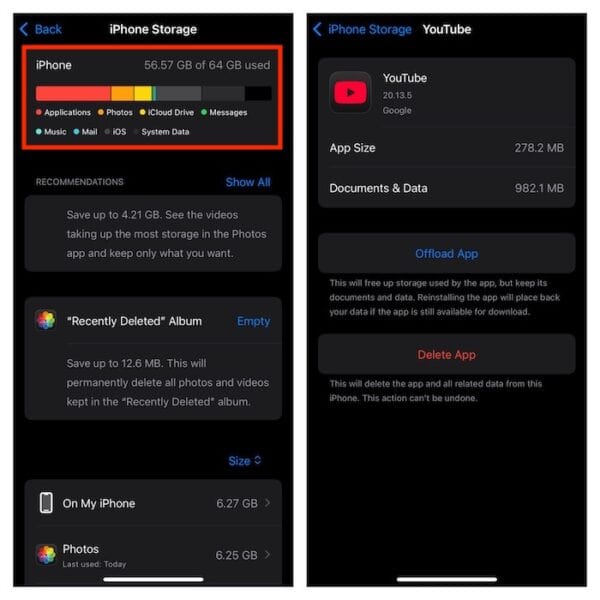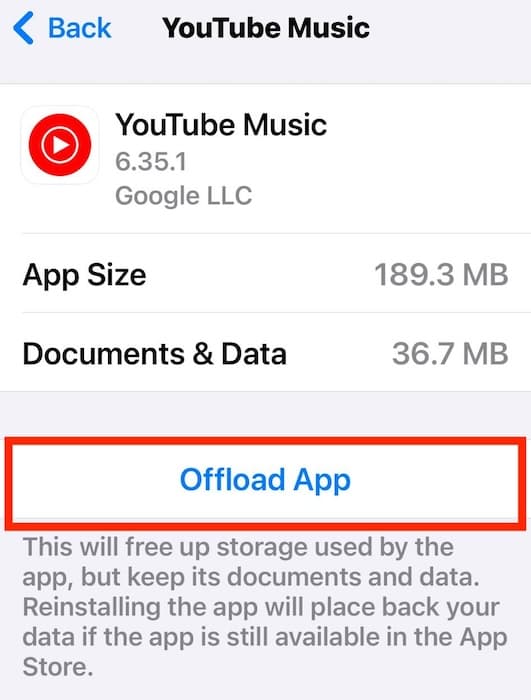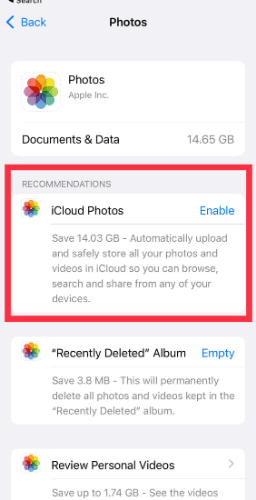iOS updates typically take up more space during and after installation. Minor updates like iOS 18.5 are usually around 1.5GB, and they can also add another 1GB to 3GB to System Data once installed. But if you’re seeing several extra gigabytes disappear after explaining iOS 18.5 (or any minor release), you might be dealing with a storage bug.
The real hassle is figuring out what you can safely delete. Of course, you’d want to free up space, but not at the cost of losing something important. The best move is to troubleshoot the most likely causes first. Here’s where to start.
1. Check iPhone Storage Breakdown First
Time needed: 5 minutes
Before trying any fixes, it’ll help to pinpoint where the storage went. The iPhone’s built-in storage breakdown can show you if “System Data” has inflated, if an app grew unexpectedly, or if there’s a leftover iOS update still sitting in memory.
- Go to Settings > General > iPhone Storage.

- Wait for the list to populate.
- Look for anything unusual, e.g., iOS 18.5 still listed under apps, System Data taking over 10GB, and Apps using way more space than usual.
- Use this as a guide to decide your next steps
2. Delete the iOS 18.5 Update Installer
The installer file sometimes stays on your device even after a successful update. Leftover junk files like these can take up over a gigabyte, especially if the update failed to clean itself up properly. It’s quite common when you download updates manually but delay the installation.
- Go to Settings > General > iPhone Storage.
- Scroll and tap iOS 18.5 under the list of apps.
- Tap Delete Update.
3. Offload Unused Apps
If your storage suddenly dropped after updating, check if any inactive apps ballooned in size. iOS sometimes caches extra data for background refresh or iCloud re-syncs after an update. Offloading clears the app without deleting personal data.
- Go to Settings > General > iPhone Storage.
- Tap an unused app with a large file size.
- Tap Offload App.
- Reinstall if needed later.
4. Clear Safari Cache and History
Browser data tends to stack up silently, and after updates, iOS may duplicate certain cached elements temporarily. This won’t recover massive chunks, but it helps reduce bloat if you haven’t cleared Safari in a while.
- Go to Settings > Safari.
- Scroll down and tap Clear History and Website Data.
- Confirm to proceed.
5. Carefully Disable and Re-enable iCloud Photos
For some users, iCloud Photo syncing can get stuck after updates and create ghost files that bloat “System Data.” Disabling and re-enabling iCloud Photos can reset the sync cycle. Just remember to back up Photos to iCloud so that you can recover anything you erase.
- Go to Settings > Apple ID > iCloud > Photos.
- Toggle iCloud Photos off.
- Wait a few minutes, then toggle it back on.
6. Use Mac or Finder to Inspect Storage
iOS doesn’t fully explain what’s taking up space, but Finder on macOS does. Connecting your iPhone to a Mac lets you view categories like “Other” or “System Data” and confirm if something looks off.
- Plug your iPhone into a Mac.
- Open Finder and select your device.
- Review the Storage bar and category breakdown.
- If System Data looks unusually large, note it for Apple Support or further action.
7. Backup and Erase Your iPhone
If System Data is inflated beyond 10GB to 15GB and none of the steps work, the only real fix might be a factory reset. This wipes everything and rebuilds the file system from scratch, no leftover update packages, no ghost caches. However, make sure to back up your data first.
- Go to Settings > General > Transfer or Reset iPhone.
- Tap Erase All Content and Settings.
- Follow prompts to back up to iCloud and wipe.
- Restore from backup during setup.
If System Data is also spiking on your Mac, there are several steps you can try before a factory reset.






